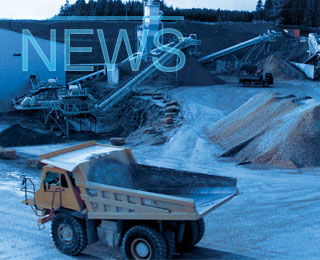Iranian cement sales came in at 5.75Mt in March, down two per cent from 5.87Mt a year earlier, according to the Iranian cement association.
Producers manufactured 4.676Mt of cement in March 2024, a notable drop of 25.5 per cent YoY, while clinker rose a robust 13.3 per cent YoY to 6.97Mt.
A total of 1.28Mt of cement and clinker were exported in March, a 17.4 per cent expansion from a year earlier, with cement exports increasing 16.2 per cent YoY to 0.43Mt and clinker exports rising 18.1 per cent YoY to 0.85Mt.
Full Iranian calendar year
In the full Iranian calendar year (from 21 March 2023 to 19 March 2024), cement consumption in Iran amounted to 66.19Mt, roughly an 11 per cent expansion from the previous Iranian calendar year.
Cement production totalled 71.44Mt, up roughly 13 per cent YoY. Clinker production was 76.68Mt, up around five per cent YoY. Exports were roughly flat at 14.65Mt, with cement exports up around 34 per cent YoY at 5.72Mt, while clinker exports dropped around 15 per cent YoY to 8.93Mt.
Outlook
The Iran cement sector saw strong domestic growth in the 2023-24 Iranian calendar year, suggesting overcapacity concerns have lessened. The latest data from The Global Cement Report, 15th Edition, shows cement capacity totalling 103.7Mta, suggesting a capacity utilisation rate of 68.9 per cent for the latest Iranian calendar year, up from around 61 per cent in the 2022-23 calendar year. According to Iran’s Cement Industry Producers Association there are 96 cement production lines active in 74 factories across the country.
Large infrastructure projects will help drive cement demand in 2024. A total of IRR3000trn (US$70,671m) of projects are budgeted for the current Iranian calendar year (20 March 2024-20 March 2025) and the Iranian Mines and Mining Industries Development and Renovation Organization recently announced that IRR19trn (around US$38m) have been allocated to develop mining infrastructure, including 21 road construction initiatives.
China and Russia will remain the main source of foreign investment in Iran’s building and infrastructure sector. However, difficulties in these countries could destabilise some long-standing projects and may limit further investments into the Iranian construction sector. Furthermore, a wider and sustained easing of sanctions would be required to boost investment in Iran's construction industry over the medium-to-long term.
Strong growth in key export markets will support ongoing robust cement exports and a revival in clinker exports. According to Iran’s Cement Industry Producers Association the country exports to 25 countries including Iraq, Kuwait, Afghanistan, Syria and Pakistan. According to the IMF, GDP is forecast to grow 2.8 per cent in the Middle East and central Asia in 2024 and by 6.3 per cent in south Asia.
